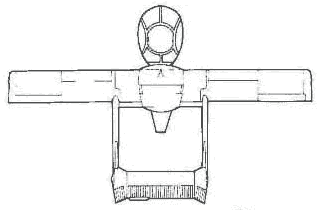

Combining
the visibility of a
helicopter with outstanding slow-flying capabilities, the original
concept for
the Edgley EA7 Optica was as a three-seat touring aircraft. Designer
John
Edgley, at that time a post-graduate student at the Imperial College of
Science
& Technology, London, began the final aerodynamic design in
1974 and a
model was wind tunnel tested in 1975. Construction of a prototype began
in 1976
in
Mounting
the whole cockpit
assembly ahead of the fan and engine gives the pilot and passengers
270°
panoramic vision, plus almost vertical downward vision; the cockpit
canopy
design allows photography through the panels. The tricycle landing gear
is
fixed and unfaired, with maintenance-free solid suspension, and the air
frame
is of all-metal construction; its internal cabin width of 1.68m permits
three-abreast seating, while baggage space and positions for mounting
specialised observation equipment are provided behind the seats and in
the
unrestricted floor area in front of the two passenger seats.
Roles
for the Optica are virtually
unlimited, from the obvious aerial photography and surveillance patrols
to
traffic reporting, powerline inspection etc. and it has the ability to
perform
much of a helicopter's work with fixed-wing economy and range.
Considerable
interest was shown in the Optica from the time of its first appearance,
and at
the 1981
Now,
the Optica has come full
circle and is once more under the control of the original designer,
John
Edgley, and some of the original design and production engineers. There
should be a bright
future for the Optica in the modern world, where a low-cost, low-speed
surveillance aircraft is often needed.